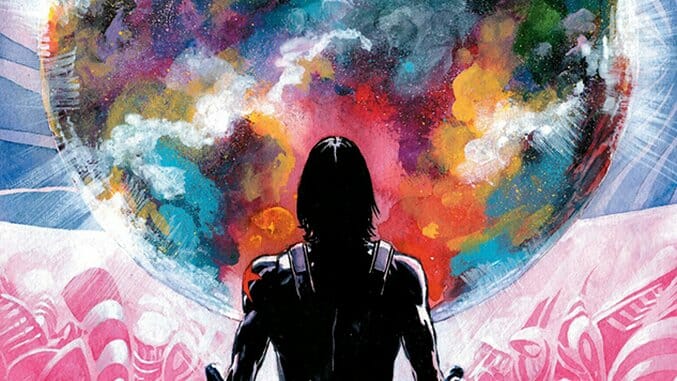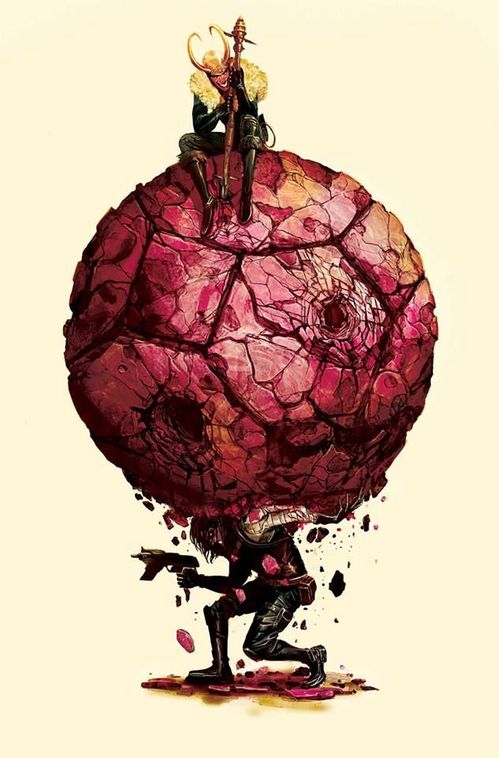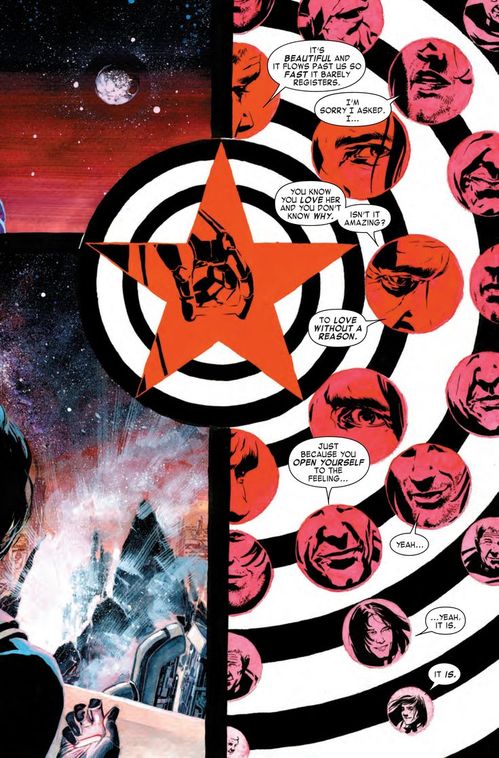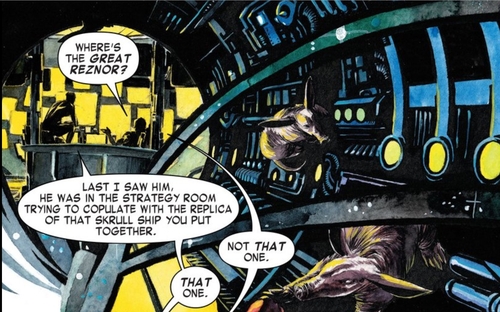This Comic Empowered Bucky Barnes To Overcome PTSD on a Cosmic Scale
Main Image and Thumbnail Cover Art by Marco Rudy
Bucky is everywhere these days. He’s the focal point of Marvel’s latest cinematic money magnet, Captain America: Civil War, and Tumblr is agog over his homoerotic potential with Cap, as well as his failed attempt at buying plums. As the tragic Winter Soldier—a former hero brainwashed by the Soviet Union into political wet work—he’s the most intriguing character in the Marvel Cinematic Universe.
For unfathomable reasons, Marvel rarely publishes a Winter Soldier comic. Besides Ed Brubaker’s runs on Captain America and Winter Soldier, your best bet for more Bucky is the recent 11-issue Bucky Barnes: The Winter Soldier by Ales Kot, Marco Rudy and Langdon Foss. Despite its brief year of publishing, this run is anything but small, spanning multiple universes, distant galaxies, mind-expanding space drugs and—best of all—an expansion of Bucky himself. It’s a hopeful, often joyous series about how even an abused, broken character like Bucky can find love and happiness. By extension, it’s an ode to the possibilities of anyone overcoming a cycle of violence, especially veterans.
This series witnesses Bucky—former partner of Captain America, former brainwashed assassin—at a much later point than his portrayal in the movies. He’s gotten his mind back, filled in as Cap for a bit and become a defender of Earth in space. Though an awkward proposition, Kot turns Bucky’s new station in space into a strength. While one would think Bucky should (literally) be more down to earth enjoying spy adventures, the interstellar job creates a delicious paradox: Bucky is in wildly new territory, but fighting the same damn war he’s always fought. He’s free and stuck at the same time. By staying in space, this series also avoids the dramatics and cross-character obligations of the Marvel community, which is a good thing for corporate-comic quality. The best Marvel series of recent years have been mostly self-contained, like Hawkeye and The Vision.
In this series, Bucky and his non-sidekick, S.H.I.E.L.D. agent Daisy Johnson, navigate the “tricky moral territory” of their job, including whether they should assassinate an innocent being now to prevent a potential galactic catastrophe later. The situation is far from a baby Hitler case; it asks whether a soldier should kill baby Gandhi because his death might help more people in the long run. The target is Ventolin, the queen of Mer-Z-Bow, a planet of pacifist telepaths. Without spoiling too much, an assassination turns into a romance, which is complicated by another assassin and the equally trippy worlds of the multiverse and psychedelic drugs. Oh, and Loki is up to no good, because he’s Loki.

Bucky: The Winter Soldier Cover Art by Mike Del Mundo
But a much older version of Bucky from another universe steals the show. He’s been fighting a version of Crossbones for decades. As in Jason Aaron’s Thor “God Butcher”/”God Bomb” storylines, where Thors of three different ages add depth to the story by showing comparable character development, the two Buckys give this title a wider focus that’s quite unexpected. The audience has never seen or imagined old Bucky, a warrior at peace. More to the point, Bucky himself never expected to be old and at peace. When he was still a child, he was taught to sneak up behind Nazis and knife them; when he was a young adult, Communist Russians brainwashed him into their perfect assassin. His stint as Captain America and current job as Earth’s defender-in-space also insert him in wars of sorts. Old Bucky is a rebuttal of the idea that Bucky can only be a thing that kills.



